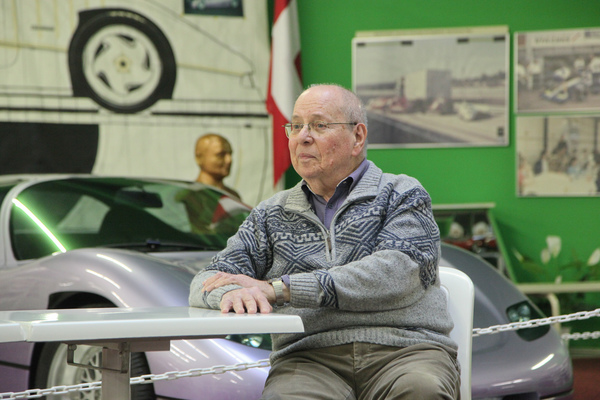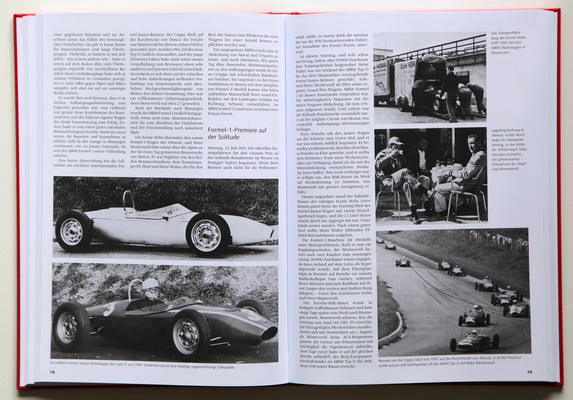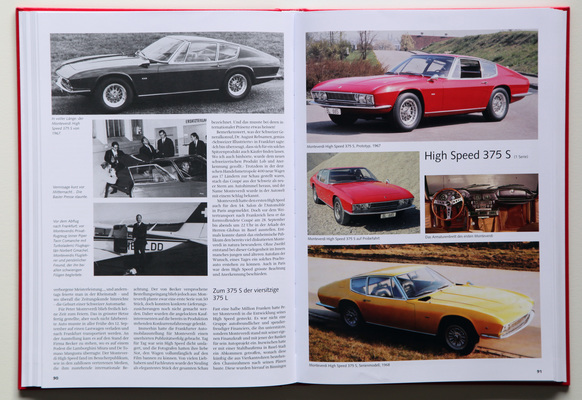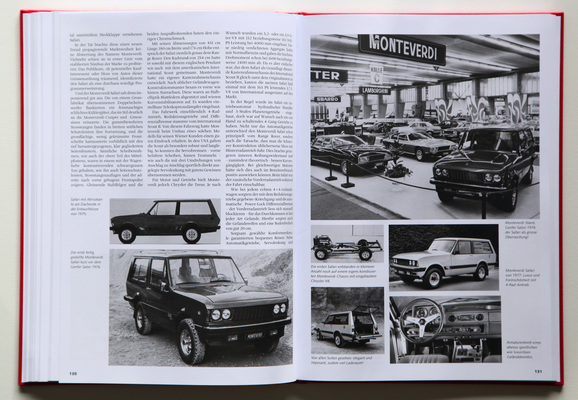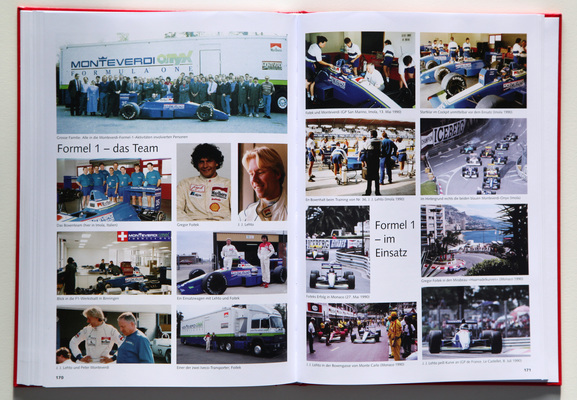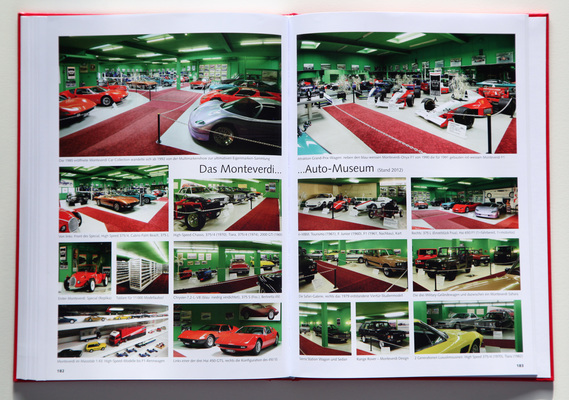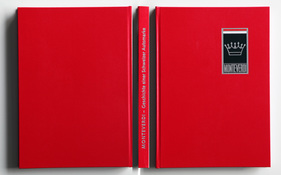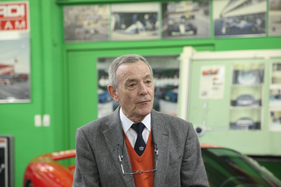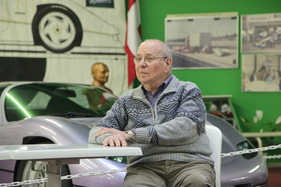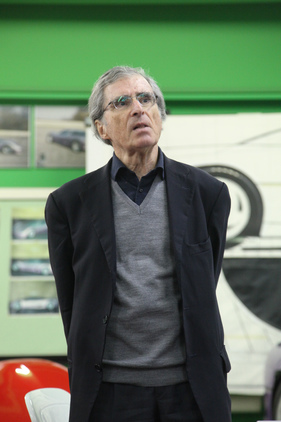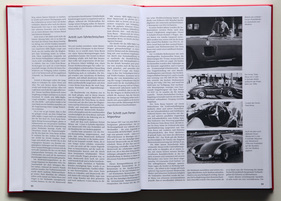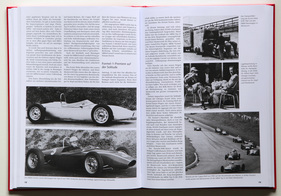The new book on Monteverdi is simple. No photo adorns the cover, just the Monteverdi logo. Peter Monteverdi would probably have liked that too, if he were still alive. But the car designer and company owner died in 1998. A 240-page book on Monteverdi, written by Carl L. Wagner and Roger Gloor and bound in black at the time, was published back in 1980.

The same authors have now completely revised their work, adding developments not yet known at the time and many more chapters of the multifaceted history of Monteverdi. This undertaking was made possible by Paul Berger, who manages the legacy of Peter Monteverdi and recently transferred it to a foundation. Berger is also the publisher of the book.

A self-made man
Peter Monteverdi succeeded in attracting attention at a young age with products and successes that elevated his sports cars to the same level as Lamborghini, Ferrari or De Tomaso vehicles. Born on June 7, 1934, he grew up between trucks and cars and was given his first car, a wooden pedal car, at the age of four. Monteverdi, who had many talents, including music and acting, completed an apprenticeship as a car mechanic with truck manufacturer Saurer after leaving school. He had actually flirted with the idea of studying medicine, but this was denied him. After the first race he was able to watch in Erlen in his youth, he decided to become a racing driver.
His talent for improving engine performance became apparent early on and after testing it on a moped, he applied it to a Fiat 508 C Balilla 1100, which he converted into a sports car, the Monteverdi Special, in 1952.
In the first part of the book, Wagner/Gloor (Wagner researched, interviewed and wrote, Gloor translated) tell the story of the young Peter Monteverdi in three columns throughout, giving away very little space for pictures. They tell of his time as a racing mechanic with Franz Hammernick, his first car swap and his first race in an ice slalom.
At the age of 22, Monteverdi had to take over the family garage business after the death of his father. Shortly afterwards, he bought his first Ferrari, a three-liter Mille Miglia Coupé with a Vignale body from 1953, and it was not long before he was already a Ferrari importer and Testa Rossa owner. This was followed by a 750 Monza, which he later converted into a gullwing, his second own design.

This was followed by the MBM phase and, in the second half of the 1960s, the start of the GT phase with the Monteverdi sports cars.
An aesthete and a practitioner
Peter Monteverdi was a sophisticated entrepreneur, but also someone who understood what his customers wanted, namely cars that were beautiful but also practical. That is why he insisted on the installation of air conditioning and was quite open to the torque converter automatic transmission when he built his GT models called High Speed. He appreciated the robustness and good performance of American engines. And beautiful shapes were a matter of course for him. It is therefore no coincidence that his design qualities were taken up by other companies. In addition to the Monteverdi vehicles, he created prototypes or conversion ideas for other companies.

A good three quarters of the book is taken up by the period up to 1980, followed by the second part, which covers the period after that. It begins with the end of the military vehicle project and continues with the establishment of the Monteverdi Car Collection, the largest car museum in Switzerland. And then there was his Formula 1 involvement at the beginning of the nineties and the Hai 650 F1.

Of course, all of this is summarized just as meticulously as the auction of a considerable part of the Car Collection in April 1992. The fact that Gloor provides the complete list of hammer prices here should be praised and it should be noted that the prices achieved 25 years ago were lower, but not that bad overall.

The book ends with the latest events, namely the establishment of a foundation and the agreement with the Swiss Museum of Transport in Lucerne, which will exhibit part of the collection in the future.
A book to read
It is a book to read, to work your way through from the first to the last page. Those who only want to use the volume as a reference book will find it somewhat more difficult, as the interesting developments on vehicles are often scattered over many chapters, because it was more important to the authors to follow the course of time.
If you still want to find out more about a particular type of car, the neatly organized index of names at the end of the book will help you find the relevant pages.
Those who are primarily interested in technical data and driving performance will also have to look for these mainly in the reading text. Although there is a brief summary of the characteristics of the individual vehicles at the back, this is often not enough for the real aficionado, but as I said, there are many additional details in the running text.
However, and here the authors deserve special thanks, the appendix lists the numbers and new prices at the time.
Full of anecdotes and details
The 210 pages of text also contain many little anecdotes, such as how the Monteverdi Hai was balanced in terms of weight. Or how the medium-sized sports car got its name. It is these lovingly rendered details that sweeten the reading experience.

Incidentally, some of these stories can be found at the back of the book in so-called "episodes". These are mostly reports that have already appeared in classic car magazines (e.g. SwissClassics Revue, Autozeit), while the first part largely corresponds to the text from the 1980 book and thus covers the period up to 1980, while part 2 was newly written as part of the new edition and describes the period after 1980.
Many pictures
470 illustrations are printed in the book, we have not counted this, but we immediately believe it. There are indeed a lot of pictures, but the index of pictures per page, which is almost 2.5, reveals that this is certainly not a coffee-table book.

Only a few of the historically exciting and interesting photos are printed in large format, unfortunately! Photo enthusiasts would certainly have preferred a more generous layout, but then the book would certainly have been much thicker than 212 pages and therefore more expensive.
And CHF 87.00 (plus postage) is no small price to pay, but with this book it is certainly money well spent. After all, there is hardly any alternative for anyone interested in the Swiss car brand.

Bibliographical information
- Title: Monteverdi - History of a Swiss car brand
- Authors: Carl L. Wagner and Roger Gloor
- Language: German (an English version is in preparation)
- Publisher: Publisher Monteverdi Binningen (Paul Berger)
- Edition: 1st edition 2016
- Format: Hardcover, 21x30 cm (A4)
- Size: 212 pages, 470 photos, 215 of which are in color
- ISBN: 978-3-033-05953-5
- Price: CHF 87.00 (plus shipping costs)
- Order/buy: via [email protected] or in relevant bookshops, further information on the Monteverdi website




